Knot batik: features and technique

The history of the most ancient type of batik - nodular - has more than 10 centuries. Indochina is considered the birthplace of this art. And the word "batik" itself is made up of two: "ba" is a fabric, and "teak" is a point (the term is taken from the language used on the island of Java). The name arose from the unique technology of dyeing the material, which was based on the use of wax. Now batik is a painting on fabric, wax is actually not used, but variations in structuring a pattern have been improved every time a new one.
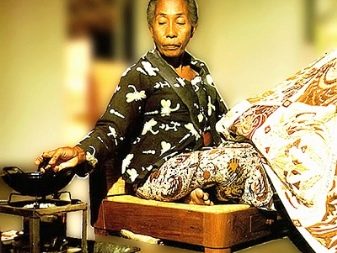
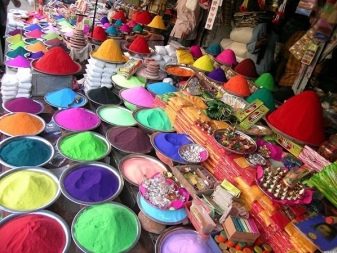
Characteristic
The knotted batik technology cannot be called complicated. It is similar to other directions of batik: the fabric must be reserved against the ingress of the dye composition on it. Only in a specific situation is not a reserve composition applicable, but ropes, threads, harnesses, with the help of which knots can be created.
First, the fabric needs to be wrapped, tied, knots made on it, and only then it is lowered into the paint. Alternatively, paint is applied to the fabric with a brush. When the coloring process is over, the rewound and bandaged places will remain unpainted. The result is an interesting pattern, its complexity and beauty depend on how thoughtful the knotting technique is. Knots, by the way, are knitted both by hand and with special devices resembling hooks.
The batik technique is simple. It is often shown to children, since they really like such handicraft: as a rule, children use a knotted batik to make rainbow bandanas for themselves.
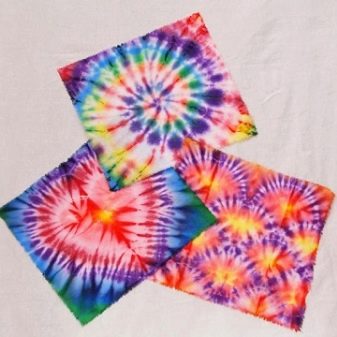
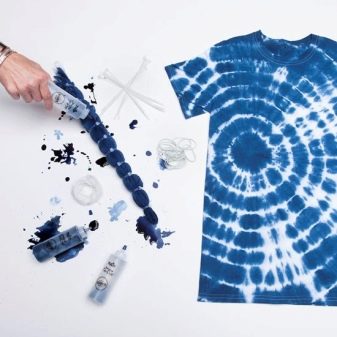
What kind of fabric do you need?
In order for the pattern on the fabric to turn out beautiful, bright, durable, you should decide on the fabric itself.
Experts recommend cotton fabrics:
- coarse calico;
- chintz;
- satin;
- thin bed sheet.
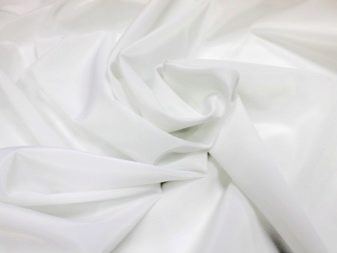
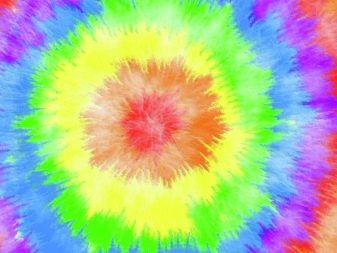
Shades of fabric are preferable white or light. It is good if the material is monochromatic, with a rare printed pattern such as polka dots or stripes. It is no secret that manual creativity always tends to save money, therefore there is nothing reprehensible in the use of used fabrics. Works in the technique of knotted batik look great afterwards, the fabrics of which were previously burned out in the sun and lost their brightness.
And only when the experience in fabric dyeing technology is confident, sufficient to complicate the technique, you can start transforming natural silk, viscose, pure wool. But synthetic fabric is not used for batik. Even fabric interspersed with synthetics will not work. These materials require a fundamentally different technique of work, the schemes and dyes will be different.
If you do not know these rules, the picture may turn out to be indistinct, blurry. Aniline dyes cannot cope with synthetic fibers, hence the result.

Dyes
Aniline dyes are the main "participant" in batik. They are used for dyeing cotton fabrics. In almost any art store, you can find a fairly wide palette of these dyes. But many batik lovers are not looking for easy ways, they make dyes on their own.
This is possible - remember what shade the onion peel or nettle gives. Natural dyes, of course, are more environmentally friendly, which is what attracts modern batik lovers.
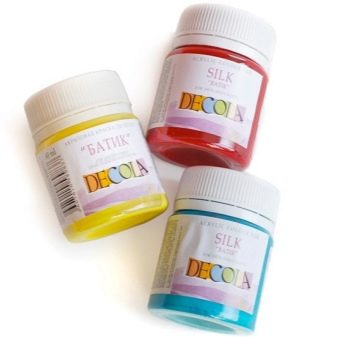
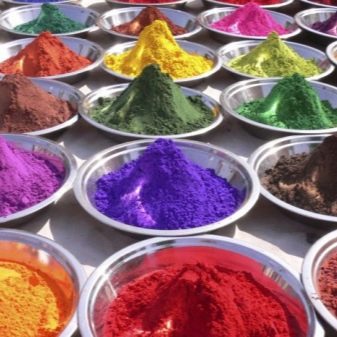
Examples of herbal dyes:
- Red - St. John's wort, buckthorn and hawthorn;
- yellow - potatoes and hazel;
- green - nettle and cuff;
- Orange - celandine;
- blue - blueberry;
- purple - blueberry;
- blue - flowers of ivan da marya.
You can start with industrial dyes, and when you are confident, try to get the dyes yourself: you will get a creative natural product.
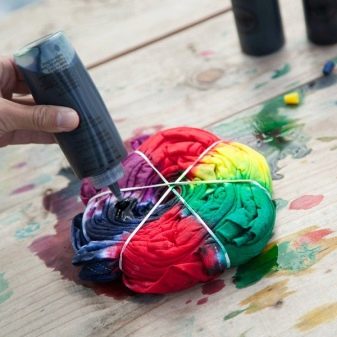

Instruments and auxiliary composition
The main tool that helps to make knots is a thin cord or a strong thread of sufficient reliability. They must prepare the fabric for dyeing. Of the auxiliary staff, it should be noted:
- eggshells;
- small stones;
- wood chips;
- even small boards;
- clothespins for linen;
- traffic jams;
- covers and more.
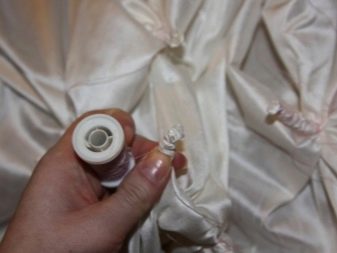
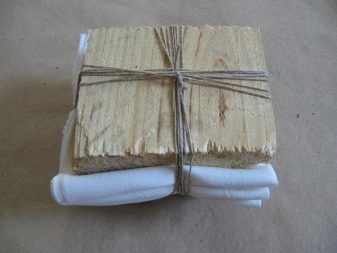
All these tools at hand help to create a unique pattern on the fabric. You can not be limited to the proposed list, but come up with your own stamps, copyright. Someone uses children's hairpins, someone caps from felt-tip pens and pens, someone elastic bands-springs.
And you will also definitely need utensils where the most interesting things in knotted batik will be carried out. This should be a container made of glass or ceramics (paints will be diluted in it), an enamel pan (the staining itself takes place in it), a container for subsequent rinsing of the fabric, a plastic bottle for storing the dye. You also need a standard wooden spatula, which you will use to stir the fabric.
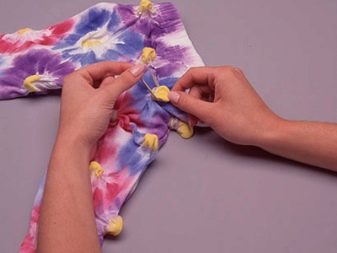
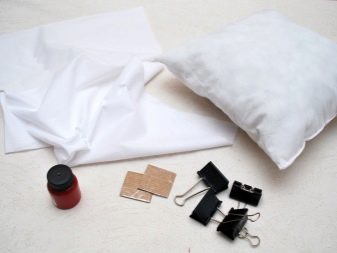
Technology
It is not necessary to have special skills, art education and even a simple ability to draw. The principle of knotted batik: each piece of fabric that has not been stained is tied so that no paint gets into the knot. This is what clothespins, clips, cords are for. They do what batik calls fabric reservation. The fabric can be twisted, folded, sewn, folded.
In this way of reservation and subsequent staining, you can make napkins, tablecloths, clothes, scarves, bandanas, pareos.
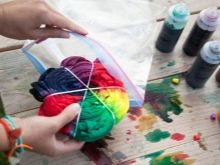


The next stage - staining can be of two types.
- Brush painting. The workpiece with knots is placed in a not very deep container, after which a small amount of dye is applied to it. If using multiple colors, apply them one at a time. But keep in mind that neighboring colors are often mixed, a new shade is obtained (not always beautiful). Therefore, think over what and how, in what sequence you paint.
- Immersion staining. Without a brush, you simply dip the fabric into a container of diluted paint. This is how multicolor dyeing is usually carried out. The process is progressive, slow.
Multi-color staining will be more difficult. The master puts blots on the stretched fabric, makes stripes and various spots that claim to be artistic. And after drying, knots, small and large, are tied on the fabric, after which the fabric is immersed in a paint of a darker shade than was used before. The procedure is repeated several times.
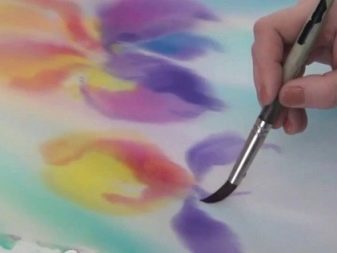
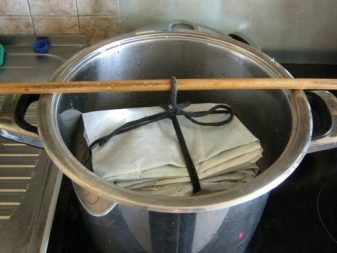
How to fix the composition?
There is a variant of using paints "under the iron". The work is first dried, then freed from the knots, ironed on the back side. Then it should be thoroughly rinsed in clean water, thus removing the dye residues. If steam-fixed dyes are used, the fabric is also freed from knots, the painting is fixed with steam. The product should also be rinsed, dried, and ironed.
If you are using aniline dye and the dip method, it is possible to fix the dye right away. It is diluted with hot water in a pot that can be heated. This water should cover the entire fabric even after boiling, therefore 3-4 liters of water is taken per 100 g of fabric (in a dry state). The workpiece is placed in a bowl and boiled over not very high heat. The cotton is boiled for about 20 minutes, then it is taken out, 50 g of salt is added to the solution, and the fabric is boiled again for half an hour.
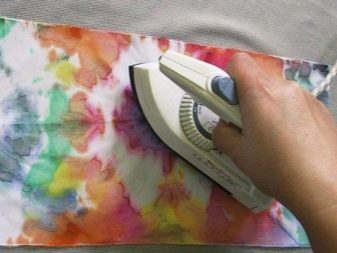
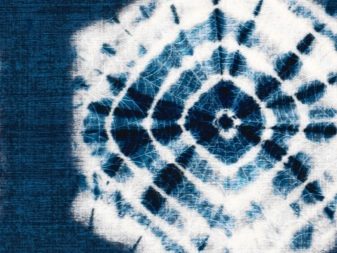
If you dye silk, the process will not be very different, but instead of salt, vinegar is used. The fabric must be left in the solution until its temperature drops to 50 degrees. Then the fabric is washed in warm water, then in cold water. Only at this stage are the knots untied and the tissue is washed again. Iron the fabric while still damp so that the folds from the knots go away without problems. If you do everything this way, there will be no need to re-fix the color.
Knotted batik is not the most capricious technique, it goes well with others (with cold and hot batik). Craftsmen often use it as a basis for a floral motif, which is then worked out using the cold batik technique. In technique, it is not necessary to use the entire cut, but only a part of it. While you are boiling the material, you can leave one edge of it unpainted, in a convenient way, fix it over the boiling pot. So, the transition from the colored part to the uncolored part will be natural. And then you can manually paint the unpainted fragment.
Those who "cooked" jeans in the Soviet years understand how with the help of knots and boiling it is possible to achieve a unique design of clothes. Try knotted batik, you will love it!
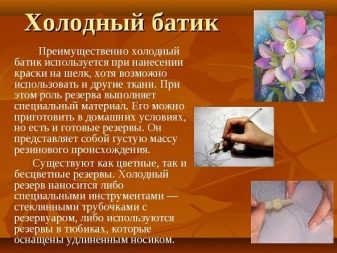
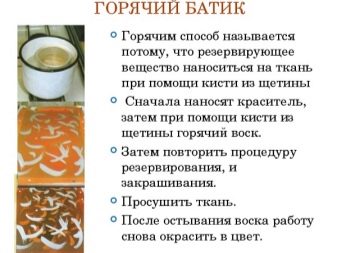
In the next video you will find a master class on knotted batik (spiral pattern).








